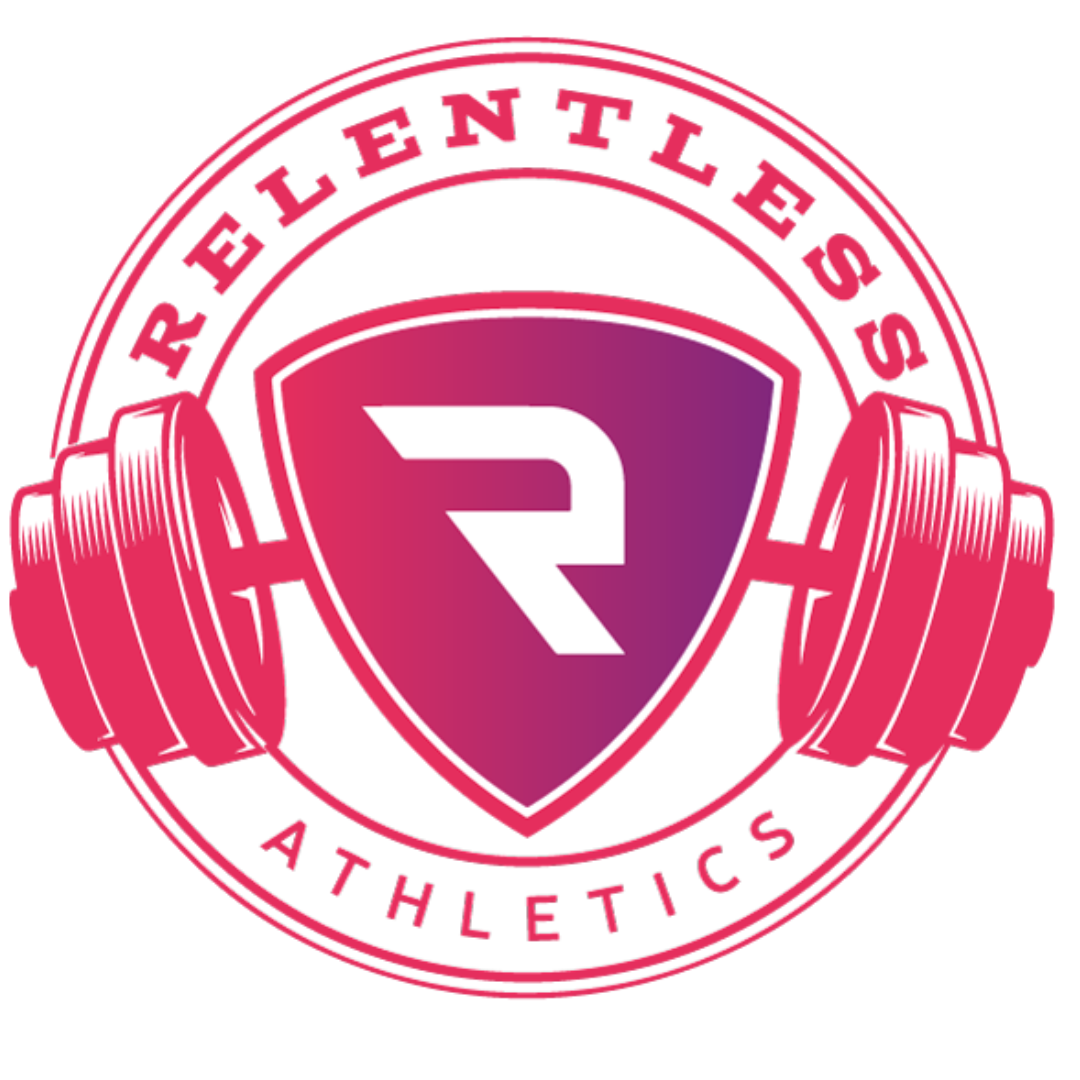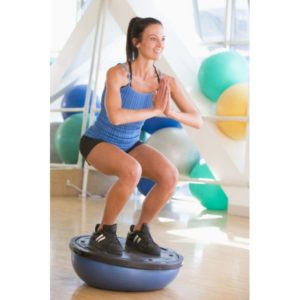The Science Behind Core Training
By: Julia Kirkpatrick, MS, CSCS
A stable core helps athletes transfer force more efficiently allowing for harder kicks, faster sprints, higher jumps, and a more resilient athlete.
From bosu balls to 3 minute planks, coaches everywhere try to implement “core training” into their sports practice.
But here’s the thing, research shows us core stability and core training in isolation often have little to no transfer to sports performance.
Keep reading to find out the most effective way female athletes can develop core stability.
To find out about core stability, first we need to know:
What body parts make up your core?
The simple answer to this is that we aren’t sure! Scientists can’t agree on this term and there are many different answers that you will find out there, but not to fret! [2] If we don’t have a consensus on what the term ‘core’ refers to, we can think about the term another way.
Picture our bodies like a tree. There isn’t necessarily a true ‘core’ of a tree, but trees have trunks that serve as the connection pathway between the roots and the branches and leaves! This is very similar to how our bodies function in sport and movement!
As ATHLETES, it is very common that you will need to engage in HIGH-intensity actions that require the appropriate machinery and mechanisms to carry out these sporting movements EFFICIENTLY [1].
High-intensity actions include:
Sprinting
Jumping
Change of direction
Let’s think about a volleyball player spiking a ball.
She needs to:
Produce force through the ground to jump by loading her lower body musculature (the roots)
Transmit the force to her upper body (through the ‘trunk’)
Execute the transfer of force by hitting the volleyball (branches/leaves)
The presence of a weak link in this chain may lead to energy leaks and less POWERFUL sporting movements! [4]
Bottom line: A STRONG ‘connection pathway’ is CRITICAL to reducing these energy leaks!
Sooo….
What IS Core Stability?
Again, there isn’t one answer to this!
The demands of sport are quite different from each other (think gymnastics versus basketball) so it’s difficult to decipher what exactly defines trunk stability; plus, the demands of the trunk will be different for each sport! [2]
But!!! We know that to transmit forces through the body, it’s advantageous to have an efficient pathway.
For example Kaelee (basketball player) is going for a layup.
In order to execute this movement most effectively, she will need to stabilize herself on a single leg and propel her body upwards! To be as stable as possible, she will have to minimize horizontal movements because she’s trying to accelerate upwards!
How Do We Train The Core?
The simple answer to this is through STRENGTH TRAINING! [5]
Do you know what HAS NOT been shown to help (despite what the Instagram gurus may tell you):
Special ‘core’ exercises that will help improve performance (ex: two-minute-long plank) [5]
Increased core stability alone makes you better at your sport (ex: crunches with your iphone app) [5]
Training on unstable surfaces is superior to training on stable surfaces because of increased muscle activity (ex: squats on a bosu ball) [5]
Unstable surface training actually leads to DECREASED power outputs compared to stable surfaces (this means LESS force transfer)
**THINK ABOUT IT! The function of your core is to TRANSFER FORCE. These exercises do not train your body (physically and neurologically) how to transfer force!
Not a lot of force transfer going on here….
What HAS been shown is that traditional strength training (such as squats and Olympic lifts) can help develop the machinery (neural adaptations and strength) to carry out those HIGH-intensity actions [6].
A result, this can:
Reduce injury risks [3]
Increase power production [6]
Increase strength to help produce more force à jump higher, run faster, etc. [6]
So, what is this all saying?
The main point is that if you’re an ATHLETE you need to MOVE like one too!
Core stability and core training alone are not the keys to success, as they often are performed in isolation and have little to no transfer to sport performance [5].
On the other hand, strength training is an imperative part of the performance enhancement process; it helps prepare the athlete to handle LARGE amounts of stress and functions as a tool to execute proper MOVEMENT PATTERNS as they pertain to sport [4].
References
Gonzalo-Skok, O., Tous-Fajardo, J., Suarez-Arrones, L., Arjol-Serrano, J. L., Casajús, J. A., & Mendez-Villanueva, A. (2017). Single-Leg Power Output and Between-Limbs Imbalances in Team-Sport Players: Unilateral Versus Bilateral Combined Resistance Training. International Journal of Sports Physiology and Performance, 12(1), 106–114. https://doi.org/10.1123/ijspp.2015-0743
Hibbs, A. E., Thompson, K. G., French, D., Wrigley, A., & Spears, I. (2008). Optimizing Performance by Improving Core Stability and Core Strength: Sports Medicine, 38(12), 995–1008. https://doi.org/10.2165/00007256-200838120-00004
Leetun, D. T., Ireland, M. L., Willson, J. D., Ballantyne, B. M., & Davis, I. (2004). Core Stability Measures as Risk Factors for Lower Extremity Injury in Athletes. Medicine & Science in Sports & Exercise,36(6), 926-934.
McGill, S. (2010). Core Training: Evidence Translating to Better Performance and Injury Prevention: Strength and Conditioning Journal, 32(3), 33–46. https://doi.org/10.1519/SSC.0b013e3181df4521
Wirth, K., Hartmann, H., Mickel, C., Szilvas, E., Keiner, M., & Sander, A. (2017). Core Stability in Athletes: A Critical Analysis of Current Guidelines. Sports Medicine; Auckland, 47(3), 401–414. http://dx.doi.org/10.1007/s40279-016-0597-7
Young, W. B. (2006). Transfer of Strength and Power Training to Sports Performance. International Journal of Sports Physiology and Performance, 1(2), 74–83. https://doi.org/10.1123/ijspp.1.2.74
About the Author:
Julia holds a M.S. in Sports Science and Coach Education from East Tennessee State University and a B.S. in Kinesiology with a concentration in Exercise Science from Temple University. During her time at ETSU, Julia worked as the Assistant Strength and Conditioning Coach for the Women’s D1 Volleyball team and headed their sports nutrition. She also worked as the Head Strength and Conditioning Coach at a local college in Tennessee for their Track & Field team.
Julia’s main passion is bringing an evidence-based approach to training and nutrition practice. Her time spent around collegiate athletes highlighted the gap between real-world practice/understanding and science; enter Relentless Athletics. After working with a variety of athletes and online diet clients, Julia knew there was a hole that needed to be filled – specifically for females. She saw that there was an absence of reliable sources for these individuals to gather information to help develop their athletic ability. Relentless offered the perfect community for Julia to spread her knowledge and help build STRONG foundations for females through nutrition education and training.
In her free time, Julia competes in powerlifting and weightlifter recreationally. She holds the Pennsylvania Junior State Record in the bench press in the 72 kg weight class.









